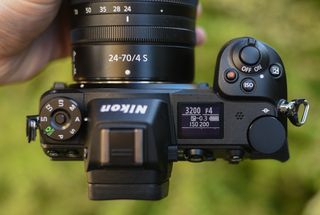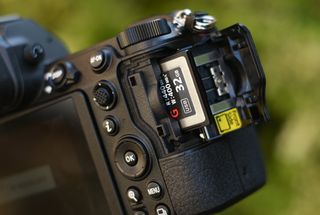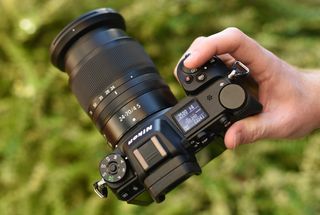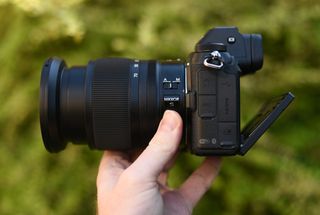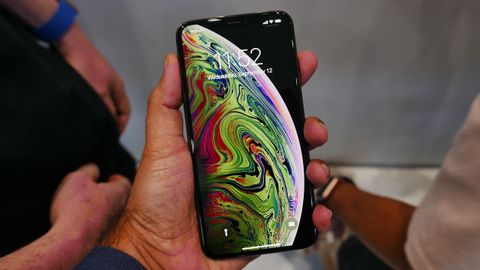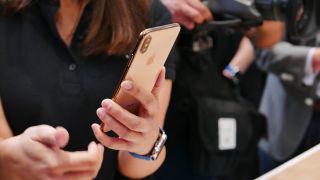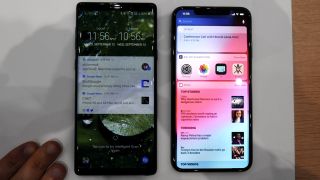Hands on: iPhone XR review

The iPhone XR is going to be the undercover hit of the Apple launch - there, we’ve said it.
That’s not because it does anything particularly wonderful, but because it’s going to be the more accessible version (price-wise) of the fancy iPhone XS.
The presence of the XR shows that the days of a physical home button is over - that’s going to worry some people, but now all the new iPhones launched are using this all-screen design with Face ID facial recognition to unlock your phone.
But here’s the big question: is it the one you want to upgrade to? Apple has made some compromises to drop the price, so will you still feel like you’re getting enough for your money?
What's the difference between the three new iPhones? Watch our handy explainer below:
Below you'll find links to all of our other iPhone and Apple hands on reviews from the big event...
- Hands on iPhone XS review
- Hands on iPhone XS Max review
- Hands on Apple Watch 4 review
iPhone XR price and release date
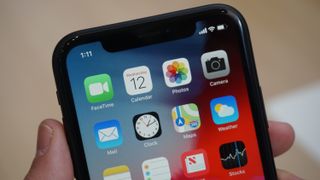
In terms of the iPhone XR release date, you’ll be able to pre-order it from October 19, and pick it up in stores from October 26. We were expecting that this model might be a little delayed, so that’s good news for those that wanted a slightly cheaper iPhone.
The price of the iPhone XR is something that’s going to attract buyers: at $749 for the 64GB model ($799 for 128GB and $899 for the 256GB) it’s far more affordable than the iPhone XS, which is taking all the headlines from Apple’s launch event.
Design
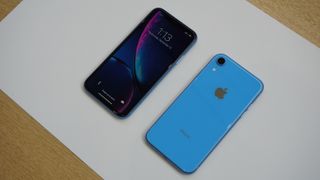
All the rumors around the iPhone XR in the build-up to the launch event was centered around how this would be the ‘affordable’ member of the new line-up… meaning it became known as something that could be a gross hybrid of Apple’s parts, a Frankenstein’s monster of a device.
Well, unsurprisingly for a brand that puts such a focus on design (and whose chief designer was flipping knighted) it’s not an ugly device in any way.
Next to the iPhone XS, sure - it’s not quite as attractive. It’s got thicker bezels around the screen, the edges aren’t made of the same premium-feeling materials, and the back is still glass.
But as a standalone device it looks just fine - it could easily be mistaken for the iPhone X of last year if the two devices weren’t held closely.
The size is obviously larger than the iPhone XS / X, thanks to that larger 6.1-inch display that needs to be wrapped in metal and other assorted components.
It still feels like an iPhone in the hand, something that has the curved edges that fall away from the side of the screen, and the two speaker grilles at the bottom of the iPhone XR (even though only one is actually functioning).
It certainly feels chunkier than the other two models that were launched by Apple at the same time - but not in a terrible way and is a fine tradeoff for the cost.
There’s no headphone jack there as you can imagine - Apple still bravely battling against the tyranny of the 3.5mm connector - so you’ll be stuck using the bundled earbuds in the box, which come with a Lightning connection at the end.
You should be able to use your own 3.5mm-shod headphones with an adaptor - but we’re hearing rumors that will be taken from the box this year, in a bid to cut costs, so we’ll have to see if that plays out.
The rest of the iPhone XR’s design is predictable if you’ve seen the iPhone X or checked out pics of the new XS, with the same buttons for the volume and to activate Siri on the left- and right-hand side of the phone respectively.
It’s hard to put a price on how much a phone costs just by feel these days - largely because they’re so much more expensive - but the ‘cheap’ iPhone certainly doesn’t feel that way and actually impresses quite profusely compared to the XS.
Screen
Advertisement
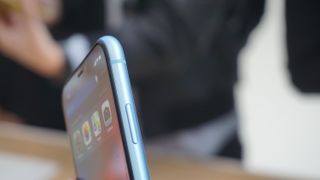
In the build-up to the iPhone launch, much of the talk was around the screen of the iPhone XR. It was going to be 6.1-inches, have thicker bezels and use LCD technology over OLED to keep the costs down.
Well, it seems that has indeed come to pass, with the new Liquid Retina display that Apple’s developed for the model. What that means is that although it’s technically lower quality - HDR playback isn’t present here, for instance - the color reproduction and overall screen effect isn’t that bad at all.
After all, Apple’s been using LCD technology in its iPhone range even last year (where rivals like Samsung have eschewed the tech) so it knows how to make a decent-looking LCD display.
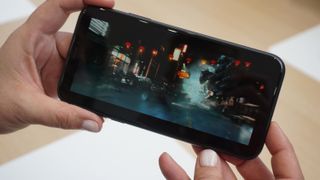
A phone with a screen this big obviously feels larger in the hand - you definitely get the sensation that this is a plus-size phone - but it doesn’t feel unwieldy due to the fact the display stretches from edge to edge.
There is one thing to note for those upgrading from older iPhones: there screen ratio is close to 18:9, which is a narrower than the usual 16:9 widescreen that many will be used to.
This is really only an issue when using apps or watching movies in landscape, as that little notch at the top (housing the cameras, speaker and sensors) will get in the way when you decide to fill the screen with content.
While that will be quite rare, it’s probably worth noting as some people were irked by the notch-notion with last year’s iPhone X.
Camera
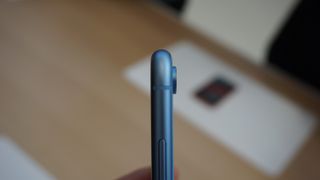
The camera on the iPhone XR is the weakest of the three phones announced by Apple - it’s only got a single sensor rather than two for portrait mode, but that doesn’t mean it’s terrible quality in comparison and it’s the same as the one in the XS, just lacks the second lens.
It more means that you won’t be able to have a telephoto lens for lossless zooming in, or be able to take clever portrait modes using the two sensors together, as you can with the iPhone XS pair announced (although with the Focus pixels, it can do depth sensing and blurring the background. It works rather nicely, considering it’s ‘faked’.
You can also then change the depth of the blur effect with a scroller on the bottom of the phone - Apple is claiming it’s the first brand to do this, but we’ve seen it plenty of times on handset like the Samsung Galaxy S9 Plus, so it’ll be interesting to hear where Apple sees the difference.
Advertisement
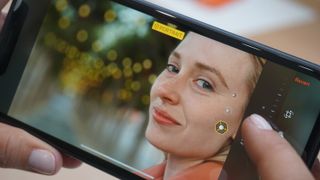
It’s a 12MP sensor on the rear, with the front packing the TrueDepth camera for facial unlocking and selfies, and while Apple didn’t make a big deal about the functionality on stage it’ll be equally as good as that seen on the iPhone 8 last year, which was far from terrible.
It’s also got Smart HDR in the mix, allowing the iPhone XR to really capture the high-end elements of a photo, fusing the light and dark elements well in the demo pictures we saw.
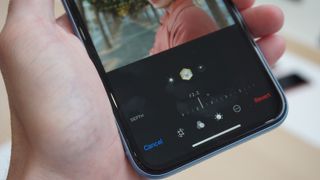
In our very rapid testing in the demonstration area, the pictures we took were clear and sharp and colorful - but that’s largely because all smartphone cameras are more than half-decent these days.
It seems that if you just want a camera that can take a nice picture when needed, and no fancy bells and whistles, the iPhone XR will do you just fine.
Battery
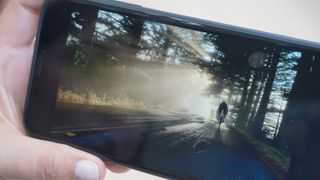
Advertisement
While we don’t know the full spec list for the iPhone 9, there are a few good reasons to think that the iPhone XR could have better battery life than expected.
Apple’s likely put a little less RAM in here alongside the A12 Bionic chipset, combining less power with a more efficient engine. The screen resolution on the iPhone XR will also be likely a little less too - although LCD technology is sometimes more power-hungry than OLED.
We’ll need to properly test the iPhone XR to see if its battery life can hold up to scrutiny - we’ve been burned by iPhones not lasting as well as we’d like in the past, but the larger size of this phone does mean Apple could have shoved a little bigger power pack inside.
Early verdict
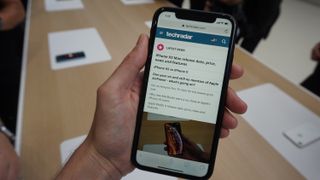
The cheaper iPhone is never the most interesting one, but it’s often the volume driver - and you could make a good few arguments that the iPhone XR will do just that.
However, the decision to make it larger is an odd one: this is a phone that perhaps is better suited to the Asian market (where bigger screens are more popular), which could be an issue for Western buyers.
The lack of a smaller, iPhone SE sequel is what people will be wondering about - but it’s clear that Apple had decided bigger is better, shaving off some of the more expensive elements of the iPhone XS and bringing it together in this still-impressive package.
